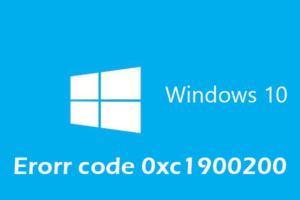-
Table of Contents
The Complete Guide to Removing Broken Registry Items
Introduction:
The Windows Registry is a crucial component of the operating system that stores important settings and configurations for various software and hardware on your computer. Over time, the registry can accumulate broken or invalid entries, which can lead to system errors, crashes, and performance issues. In this complete guide, we will explore different methods to get rid of broken registry items, helping you optimize your computer’s performance and stability.
Understanding Broken Registry Items and Their Impact on Your System
The Windows registry is a crucial component of your computer’s operating system. It stores important settings and information that help your system run smoothly. However, over time, the registry can become cluttered with broken or invalid entries, known as broken registry items. These broken items can have a negative impact on your system’s performance and stability. In this complete guide, we will explore what broken registry items are, how they can affect your system, and most importantly, how to get rid of them.
Broken registry items are entries in the Windows registry that no longer point to valid files or programs. They can occur due to various reasons, such as incomplete software installations, uninstalled programs, or even malware infections. These broken items can accumulate over time and clutter your registry, leading to slower system performance, application crashes, and even system errors.
The impact of broken registry items on your system can be significant. As the registry becomes cluttered, it takes longer for your system to access the necessary information, resulting in slower boot times and overall sluggishness. Additionally, broken registry items can cause conflicts between different software applications, leading to crashes or errors when trying to run certain programs.
To get rid of broken registry items, you have several options. One of the most effective methods is to use a reliable registry cleaner tool. These tools scan your registry for broken items and remove them, helping to improve your system’s performance and stability. However, it is important to choose a reputable registry cleaner from a trusted source to avoid potentially harmful or ineffective software.
Before using a registry cleaner, it is recommended to create a backup of your registry. This ensures that you can restore your registry to its previous state if anything goes wrong during the cleaning process. Most registry cleaner tools provide an option to create a backup before making any changes, so be sure to take advantage of this feature.
Once you have chosen a reliable registry cleaner and created a backup, you can proceed with the cleaning process. Simply launch the registry cleaner tool and follow the on-screen instructions. The tool will scan your registry for broken items and present you with a list of items to be removed. Review the list carefully to ensure that no important entries are being deleted. Once you are satisfied, proceed with the cleaning process.
After the cleaning process is complete, it is recommended to restart your computer to allow the changes to take effect. You should notice an improvement in your system’s performance and stability, as the broken registry items have been removed.
In addition to using a registry cleaner, there are a few manual methods you can try to get rid of broken registry items. One method is to use the built-in Windows Registry Editor, also known as regedit. This tool allows you to manually navigate through the registry and delete specific entries. However, caution is advised when using regedit, as deleting the wrong entry can cause serious system issues. It is recommended to create a backup and only delete entries if you are confident in their irrelevance.
In conclusion, broken registry items can have a negative impact on your system’s performance and stability. To get rid of them, you can use a reliable registry cleaner tool or try manual methods such as using the Windows Registry Editor. Whichever method you choose, it is important to proceed with caution and create a backup of your registry before making any changes. By regularly cleaning your registry, you can ensure that your system runs smoothly and efficiently.
Step-by-Step Guide to Identify and Remove Broken Registry Items
The Windows Registry is a crucial component of the operating system that stores important settings and configurations for various software and hardware installed on your computer. Over time, the registry can become cluttered with broken or invalid entries, which can lead to performance issues and system errors. In this step-by-step guide, we will walk you through the process of identifying and removing broken registry items to help optimize your system’s performance.
Step 1: Backup Your Registry
Before making any changes to the registry, it is essential to create a backup. This will allow you to restore the registry to its previous state if anything goes wrong during the cleaning process. To create a backup, open the Registry Editor by pressing the Windows key + R, typing “regedit” in the Run dialog box, and hitting Enter. Once the Registry Editor is open, click on “File” in the menu bar, select “Export,” choose a location to save the backup file, and give it a descriptive name.
Step 2: Use a Registry Cleaner
There are several third-party registry cleaners available that can help you identify and remove broken registry items. These tools scan your registry for invalid entries, orphaned keys, and other issues, and provide you with a list of items that can be safely removed. Some popular registry cleaners include CCleaner, Wise Registry Cleaner, and Auslogics Registry Cleaner. Download and install one of these tools, run a scan, and review the results.
Step 3: Manually Remove Broken Registry Items
While registry cleaners can be effective, they may not always catch all broken registry items. To ensure a thorough cleaning, it is recommended to manually remove any remaining invalid entries. To do this, open the Registry Editor as mentioned in Step 1. Then, navigate to the location of the broken registry item by expanding the folders in the left pane. Once you have located the item, right-click on it and select “Delete.” Confirm the deletion when prompted.
Step 4: Use System Restore
If you are unsure about making changes to the registry or encounter any issues during the cleaning process, you can use the System Restore feature to revert your computer back to a previous state. System Restore creates restore points that capture the system’s settings and configurations at a specific point in time. To use System Restore, type “system restore” in the Windows search bar, select “Create a restore point,” click on “System Restore,” and follow the on-screen instructions to restore your computer to a previous state.
Step 5: Regular Maintenance
To prevent the accumulation of broken registry items in the future, it is important to perform regular maintenance on your computer. This includes keeping your operating system and software up to date, running regular virus scans, and avoiding the installation of unnecessary or potentially harmful programs. Additionally, it is recommended to create regular backups of your important files and folders to protect against data loss.
In conclusion, getting rid of broken registry items is an essential step in maintaining a healthy and optimized Windows system. By following this step-by-step guide, you can identify and remove these invalid entries, improving your computer’s performance and reducing the likelihood of system errors. Remember to always back up your registry before making any changes and consider using a combination of registry cleaners and manual removal for a thorough cleaning. Regular maintenance and good computing practices will help keep your registry clean and your system running smoothly.
Best Practices for Preventing Broken Registry Items in the Future
The Windows registry is a crucial component of the operating system that stores important settings and configurations for various software and hardware. Over time, however, the registry can become cluttered with broken or invalid entries, which can lead to system slowdowns, errors, and even crashes. In the previous section, we discussed how to identify and remove broken registry items using reliable tools. In this section, we will explore some best practices for preventing broken registry items in the future.
One of the most effective ways to prevent broken registry items is to be cautious when installing and uninstalling software. When installing new programs, it is essential to choose reputable sources and carefully follow the installation instructions. Avoid downloading software from unknown or suspicious websites, as these can often contain malware or poorly designed applications that can leave behind broken registry entries.
Similarly, when uninstalling software, it is crucial to use the proper uninstallation method provided by the software itself or through the Windows Control Panel. Many programs have their own uninstallers that can remove all associated files and registry entries. Using these uninstallers ensures that the software is removed cleanly and reduces the chances of leaving behind broken registry items.
Regularly cleaning up your system can also help prevent broken registry items. Temporary files, cache files, and other unnecessary data can accumulate over time and clutter the registry. By using disk cleanup tools or third-party software, you can remove these unnecessary files and reduce the chances of broken registry items.
Another best practice is to keep your system and software up to date. Software updates often include bug fixes and improvements that can help prevent broken registry items. By regularly checking for updates and installing them promptly, you can ensure that your system remains stable and free from registry issues.
It is also important to be cautious when making changes to the registry manually. The Windows registry is a complex database, and making incorrect changes can have severe consequences for your system. If you are not familiar with the registry or unsure about a particular change, it is best to seek professional assistance or use reliable registry editing tools that provide safeguards against accidental changes.
Regularly backing up your registry is another crucial step in preventing broken registry items. By creating a backup of your registry, you can easily restore it to a previous state if any issues arise. Windows provides a built-in tool called System Restore that allows you to create restore points, including registry backups, which can be a lifesaver in case of registry problems.
Lastly, using reliable registry cleaning and optimization tools can help prevent broken registry items. These tools scan the registry for invalid or broken entries and remove them, ensuring that your system remains clean and optimized. However, it is important to choose reputable tools from trusted sources to avoid potentially harmful or ineffective software.
In conclusion, preventing broken registry items is essential for maintaining a stable and efficient system. By being cautious during software installation and uninstallation, regularly cleaning up your system, keeping your software up to date, being careful with manual registry changes, backing up your registry, and using reliable registry cleaning tools, you can significantly reduce the chances of encountering broken registry items. Implementing these best practices will not only help prevent registry issues but also contribute to the overall performance and longevity of your Windows system.
Exploring Advanced Tools and Techniques for Fixing Broken Registry Items
The Windows Registry is a crucial component of the operating system that stores important settings and configurations for various software and hardware. Over time, however, the registry can become cluttered with broken or invalid entries, leading to performance issues and system errors. In this article, we will explore advanced tools and techniques for fixing broken registry items, helping you optimize your system’s performance and stability.
One of the most effective ways to get rid of broken registry items is by using a reliable registry cleaner. These tools are specifically designed to scan the registry for invalid entries and remove them safely. When choosing a registry cleaner, it is important to opt for a reputable and trusted software to avoid any potential risks or damage to your system.
Once you have selected a registry cleaner, the first step is to perform a full system scan. This process may take some time, depending on the size of your registry and the speed of your computer. The registry cleaner will meticulously analyze each entry and identify any broken or invalid items.
After the scan is complete, the registry cleaner will present you with a detailed report of the identified issues. It is crucial to carefully review this report before proceeding with the cleaning process. This will allow you to have a clear understanding of the changes that will be made to your registry.
Before proceeding with the cleaning process, it is highly recommended to create a backup of your registry. This will serve as a safety net in case anything goes wrong during the cleaning process. Most registry cleaners offer a built-in backup feature, allowing you to easily restore your registry to its previous state if needed.
Once you have created a backup, you can proceed with the cleaning process. The registry cleaner will automatically remove the broken or invalid entries from your registry, optimizing its performance and stability. It is important to note that some registry cleaners may require you to restart your computer for the changes to take effect.
In addition to using a registry cleaner, there are other advanced techniques that can help you get rid of broken registry items. One such technique is manually editing the registry using the built-in Windows Registry Editor. This method, however, is only recommended for advanced users, as making incorrect changes to the registry can cause serious system issues.
To manually edit the registry, you can open the Registry Editor by typing “regedit” in the Run dialog box. From there, you can navigate through the registry’s hierarchical structure and locate the broken or invalid entries. It is crucial to exercise caution when making changes to the registry and to only delete entries that you are certain are no longer needed.
In conclusion, getting rid of broken registry items is essential for maintaining a healthy and optimized system. By using a reliable registry cleaner and following the necessary precautions, you can effectively remove these invalid entries and improve your system’s performance and stability. Additionally, advanced users can opt for manual editing of the registry, but it is important to proceed with caution to avoid any potential risks.
Q&A
1. What are broken registry items?
Broken registry items are invalid or obsolete entries in the Windows registry that can cause system errors, crashes, and performance issues.
2. How can I identify broken registry items?
You can use a reliable registry cleaner or diagnostic tool to scan your system and identify broken registry items. These tools can detect and remove invalid entries, orphaned keys, and other registry issues.
3. How can I get rid of broken registry items?
To get rid of broken registry items, you can use a reputable registry cleaner software. These tools can automatically scan and fix registry errors, removing broken items and optimizing your system’s performance. It’s important to choose a reliable and trusted registry cleaner to avoid potential risks.
4. Are there any precautions to take when removing broken registry items?
Yes, it’s recommended to create a backup of your registry before making any changes. This allows you to restore the registry to its previous state if any issues arise. Additionally, be cautious when using registry cleaner tools and only use reputable ones to avoid accidentally deleting important registry entries.In conclusion, getting rid of broken registry items can be done by using various methods such as using a reliable registry cleaner software, manually editing the registry, or restoring the system to a previous state. It is important to approach this task with caution and create a backup of the registry before making any changes. Regularly maintaining and cleaning the registry can help improve system performance and stability.







![[Solved]: “Error Code 0xC004F050” in Windows 11 in No Time](https://www.tipsbin.net/wp-content/uploads/2023/08/8e64f519d2390bfc001a41744be2cbd4-300x199.jpeg)

